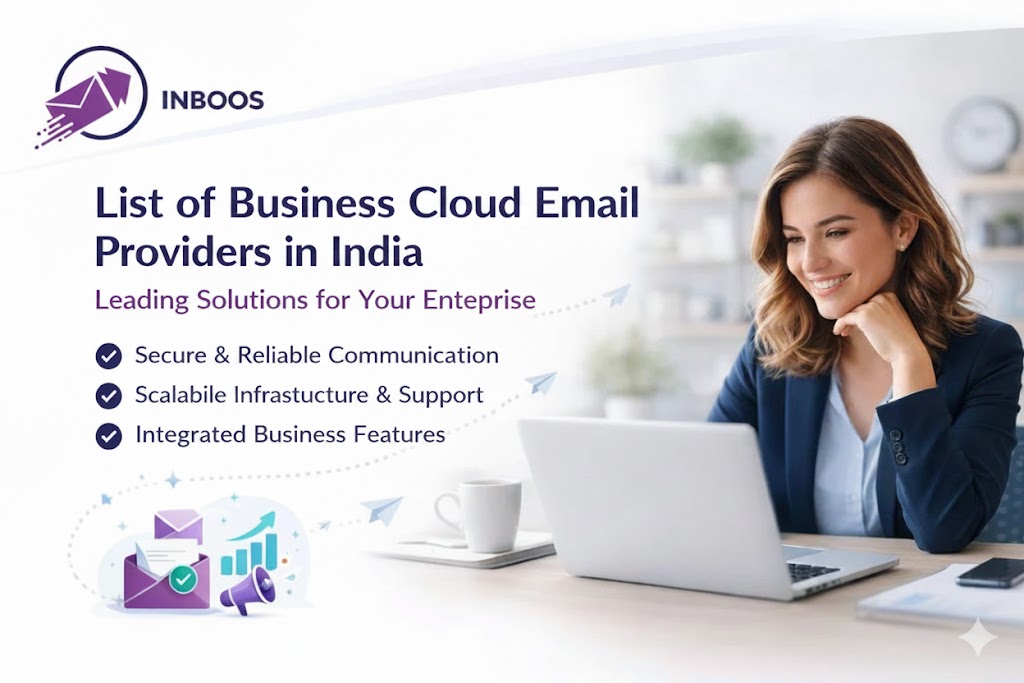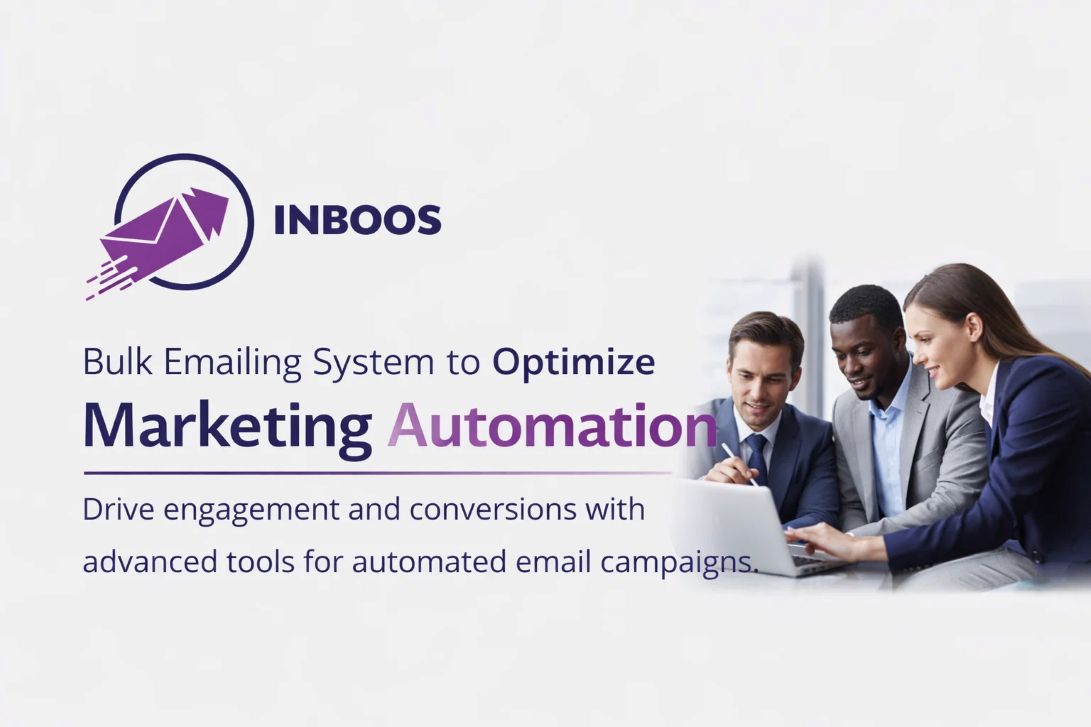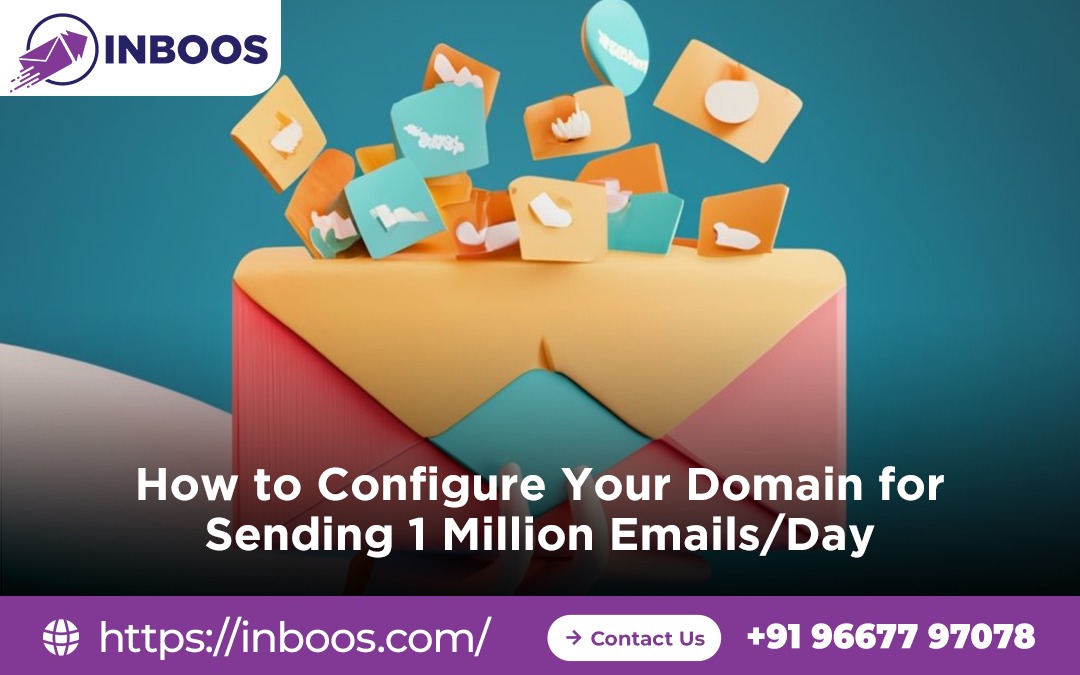Sending 1 million emails a day isn’t just about having a large list; it’s about mastering the intricate dance of email deliverability at an extreme scale. At this volume, every configuration detail, every sending practice, and every signal to Internet Service Providers (ISPs) is magnified. The difference between landing in the inbox and getting completely blocked hinges on meticulous preparation.
The foundation of successful high-volume email sending begins and ends with your domain configuration. If your domain isn’t set up correctly, even the most sophisticated sending infrastructure will fail. This comprehensive guide will walk you through the essential steps to configure your domain to reliably send 1 million emails per day.
The Deliverability Imperative at Scale
Sending at a volume of 1 million emails/day puts you on the radar of every major ISP. They are constantly monitoring high-volume senders to prevent spam, phishing, and other malicious activities. Your sender reputation becomes your most valuable asset. A poor configuration or a single misstep can lead to:
- Massive Throttling: ISPs drastically limit the number of emails they accept from you.
- Direct Blocking: Your emails are rejected outright.
- Blacklisting: Your IP addresses or domain are added to spam blocklists, severely impacting future deliverability.
- Spam Folder Placement: Your emails consistently land in the junk folder, effectively making your campaigns invisible.
Proper domain configuration is your first line of defense, proving your legitimacy to the world’s email gatekeepers.
Choosing Your Sending Infrastructure Wisely
Before touching your DNS records, understand that hitting 1 million emails/day reliably requires specialized infrastructure.
Dedicated Email Service Provider (ESP) is Non-Negotiable
You cannot achieve this scale with a standard shared hosting email service or by attempting to build your own robust email server. You need an enterprise-grade ESP that specializes in high-volume deliverability. Look for providers that offer:
- Scalability and Throughput: Proven ability to handle millions of emails per day.
- Advanced Deliverability Tools: Features like real-time analytics, spam trap monitoring, ISP feedback loops, and automated IP warm-up.
- Dedicated IP Management: Crucial for managing your own sender reputation.
- Expert Support: A dedicated team to assist with deliverability issues and complex configurations.
Dedicated IP Addresses are Essential
At 1 million emails/day, you must use dedicated IP addresses. Sharing IPs with other senders means their poor practices can hurt your reputation, which is unacceptable at this scale.
- Control Your Reputation: With dedicated IPs, your sender reputation is entirely in your hands.
- IP Warm-up: Dedicated IPs require a meticulous warm-up process to build trust with ISPs. Your ESP will guide you on the specific ramp-up schedule required for your volume.
- IP Pool Management: For 1M+ emails/day, you will likely need a pool of dedicated IPs, not just one. Your ESP will manage the rotation and distribution of emails across these IPs to optimize throughput and reputation.
Strategically Use Subdomains for Different Email Types
This is a critical best practice for high-volume senders to isolate reputation risk. Create separate subdomains for different types of email traffic:
marketing.yourdomain.com: For promotional newsletters, announcements, and sales campaigns.transactional.yourdomain.com: For critical, expected emails like order confirmations, password resets, and shipping notifications.cold.yourdomain.com(or a separate domain): If you engage in cold outreach, using a distinct, isolated subdomain (or even a completely separate domain) is vital to protect your primary and transactional sending reputation from potential spam complaints.
Each subdomain will have its own set of DNS records and its own unique sender reputation, ensuring that if one type of email causes an issue, it doesn’t compromise your entire domain.
Essential Domain Configuration (DNS Records)
This is the technical backbone of your deliverability. These records live in your domain’s DNS settings and tell the world’s mail servers that your emails are legitimate.
1. SPF (Sender Policy Framework)
- Purpose: Authorizes specific IP addresses and domains to send email on behalf of your domain. If an email comes from a server not listed in your SPF record, it’s highly suspicious.
- Configuration: A
TXTrecord added to your domain’s DNS.- Example:
v=spf1 include:esp.com include:_spf.google.com ~all
- Example:
- High-Volume Considerations:
- Include ALL Authorized Senders: Ensure every service that sends email for your domain (your ESP, your CRM, transactional email service, etc.) is included.
- DNS Lookup Limit: SPF records should not result in more than 10 DNS lookups. Exceeding this (
void lookups) can cause SPF to fail. Consolidate include statements if necessary.
2. DKIM (DomainKeys Identified Mail)
- Purpose: Adds a unique digital signature to your outgoing emails, allowing receiving servers to verify that the email was actually sent by your domain and that its content hasn’t been altered in transit.
- Configuration: Typically a
TXTrecord (or sometimes aCNAMErecord) provided by your ESP, consisting of a selector and a public key.- Example:
s1._domainkey.yourdomain.com TXT "v=DKIM1; k=rsa; p=MIGfMA0GC..."
- Example:
- High-Volume Considerations:
- Multiple Selectors: Some ESPs use multiple DKIM selectors or allow you to rotate them. Ensure all are configured.
- Unique Per Subdomain: Each subdomain should have its own unique DKIM record.
3. DMARC (Domain-based Message Authentication, Reporting & Conformance)
- Purpose: Builds on SPF and DKIM by defining your domain’s policy for handling emails that fail authentication. Crucially, it provides detailed reports on authentication failures, offering invaluable insights for high-volume senders.
- Configuration: A
TXTrecord at_dmarc.yourdomain.com.- Example:
v=DMARC1; p=none; rua=mailto:dmarc_reports@yourdomain.com; ruf=mailto:dmarc_forensics@yourdomain.com; fo=1; adkim=r; aspf=r
- Example:
- High-Volume Considerations:
- Policy (p=): Start with
p=none(monitor only). Once confident in your authentication, move top=quarantine(send to spam) and eventuallyp=reject(block entirely) to prevent spoofing of your domain. - Reporting (rua= and ruf=): Set up
rua(aggregate reports) to an email address that can receive large XML files (use a DMARC reporting service to parse these).ruf(forensic reports) provides more detailed failure data, but can be voluminous. Monitoring these reports is absolutely critical for understanding your domain’s authentication health across the entire internet.
- Policy (p=): Start with
4. Custom Return-Path / Bounce Domain
- Purpose: This is the address where bounce messages are sent. By default, it’s often a generic address from your ESP. For optimal deliverability and branding, set up a custom return-path. It also helps align your sending domain with where bounces are processed.
- Configuration: Often a
CNAMErecord provided by your ESP (e.g.,bounces.yourdomain.com CNAME bounce.esp.com).
5. PTR Records (Reverse DNS)
- Purpose: Provides a hostname for an IP address. It’s the “reverse” of a regular DNS record. Many mail servers perform a PTR lookup to ensure the IP address sending the email matches the domain in the “From” address.
- Configuration: Managed by your ESP (as they own the IP addresses). Ensure your dedicated IPs have PTR records that resolve back to a relevant hostname for your sending domain.
Strategic Warm-Up for High Volume
Even with perfect configuration, attempting to send 1 million emails immediately will get you blocked. A strategic IP and domain warm-up is paramount.
- Longer Duration: For 1M/day, your warm-up period will be significantly longer (weeks to months) than for lower volumes.
- Granular Increases: Work with your ESP to establish a daily sending volume increase schedule that is aggressive enough for your goals but controlled enough to maintain reputation.
- Engagement-First: Start by sending to your most active, engaged segments. Positive engagement signals (opens, clicks) are your best friends during warm-up.
- Diversify ISPs: Ensure you’re sending to a balanced mix of Gmail, Outlook, Yahoo, and other corporate domains from day one to build reputation across all major mailboxes.
- Leverage Automated Warm-up Tools: Many enterprise ESPs offer automated warm-up features that simplify this complex process.
Ongoing Monitoring and Optimization
Even after warm-up, continuous vigilance is necessary for 1 million emails/day.
- Inbox Placement Testing: Regularly use third-party inbox placement tools (seed lists) to see where your emails are landing across various ISPs (inbox, promotions, spam).
- Detailed Analytics Dashboards: Monitor your bounce rates (hard and soft), spam complaint rates, open rates, and click-through rates provided by your ESP. For 1M/day, your complaint rate needs to be extremely low (ideally under 0.01%).
- Feedback Loops (FBLs): Ensure you are subscribed to all major ISP feedback loops. Promptly remove any user who marks your email as spam from your lists.
- ISP Relations: Large ESPs often have dedicated teams that manage relationships with major ISPs. Leverage their expertise if you encounter specific deliverability challenges.
- Content Quality and Segmentation: Continue to refine your content, personalize, and segment your audience. Even perfect configuration can’t overcome consistently irrelevant or poorly designed emails.
Conclusion
Sending 1 million emails a day is an ambitious but achievable goal for businesses with high-volume needs. It requires a deep understanding of email deliverability, a robust ESP partner, and, most importantly, a meticulous approach to domain configuration. By properly setting up your SPF, DKIM, DMARC, and managing your IP and subdomain strategy, you lay the indispensable groundwork for reliable, high-volume email campaigns that truly reach your audience.
📩 Have Questions or Need Expert Help?
Our team is here to make your email marketing, bulk emailing, and mass emailing effortless and effective.
🚀 Let’s boost your deliverability, scale your outreach, and unlock better results!
👉 📌 Contact Us Today
 logo
logo




